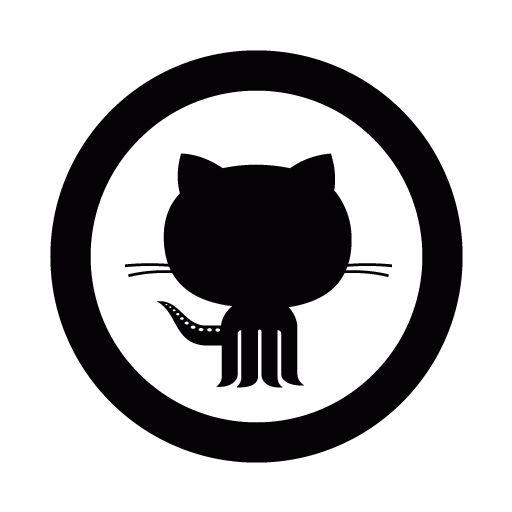


In Which Homework Incites In-Site Insight
Before this week, I had never really considered why I liked the websites I use most. I had never stopped to examine the stylistic and functional decisions that went into a page's design. After pausing to consider why a few my favorite sites captured so much of my attention, I was surprised by a few things, and impressed by a few others. Thanks to this exercise, I'll probably think about site design problems differently going forward. Let's dive into the three sites I picked and take a look at what makes them tick.
WordPress: Montessori Blogging
WordPress is a site where users can create free blogs with basic features and pay more for access to things like deeper customization and more storage. I created a WP a blog back when I started thinking about attending Dev Bootcamp, and I've posted about 20 updates since then. It's easy to post; adding media is intuitive, quick posting streamlines the process nicely, and you can switch from computer editing to mobile editing when it's time to ride the bus to work thanks to a nifty version control system.
But what makes the site really special is how it lets users engage at different levels of difficulty, choosing how much control they want over their blogs' content. On the landing page, I can click a pencil icon and jump right into editing a basic text post, or I can click "My Blog" on the other side of the page to access a hub where I can work with posts, look at stats, and tweak my site's design with a customized template. Right from the start, I get this option to decide how I want to move forward. The advanced editor gives me more control over embedded media, tagging, and type; I ususally use that one. I also have the option to choose from dozens of free designs, or I can pay for more customizable templates with cooler features, or I can just upgrade my account and dive in with my own HTML/CSS wizardry.
The site's design is fairly no-nonsense. WordPress looks less busy than Facebook, more boring (and professional) than Tumblr. The home page functions something like a social media site, with a live feed of recent blog posts and a navigation bar across the top of the screen. It's a businesslike layout for a site that takes blogging seriously. The simple, bold colors and even lines convey a sense of no-nonsense focus. When I arrive at WordPress.com, I feel like putting distractions aside and writing things down.
And the more comfortable I get with writing, the more time I spend on it, and that's more time on Wordpress. All the while, I'm being exposed to great blog inspiration and constant nudges to buy micro-upgrades. Eventually I'll cave and buy a really cool theme. Eventually I'll upgrade my account so I can do all the style myself. It's inevitable. WordPress basically already has my money. Because they make blogging very easy.
Craigslist: Trade Via Text
Craigslist is as bare-bones as it gets. This site looks like 1997 discovered how to make a social marketplace work online. As if to mimic newspaper classifieds to the letter, Craigslist doesn't play with any flashy visuals or gorgeous UI enhancements. They deliver the simple stuff: item summary, price description, contact info. And then they fade into the background, letting people with stuff to sell get together with people looking to buy stuff. It's a very simple concept kept simple by a pragmatic site design that emphasizes information over flourish.
With a few exceptions in high-traffic job markets and NYC real estate, Craigslist is free to almost all the people who use it. For buyers, it works like a newspaper. Open the site, pick your category, and browse a sortable set of results. Contact sellers through a protected email or using information they provide on their pages. (And heed the "buyer beware" scam warnings well. You're on your own out here.) Sellers need to create a free account to manage postings, which can be placed in any one of dozens of categories. Craigslist updates its sales feed quickly and doesn't insert any roadblocks into the sales themselves, so it's possible for a seller to get rid of their item the same afternoon they make an ad for it. Photos are enabled on postings, and strongly recommended by professional CL sellers. The end result is an information-rich, lightning-fast site with no bells and whistles, just a good core idea and 50 billion hits a month.
Reddit: Choose Your Own Distraction
Reddit is trying to hook you in. The aggregator site puts its most popular content categories - subreddits, or "subs" - into the default list displayed for any user of the site. So if you don't have an account, or if you just got one, you're seeing the heavy hitters: /r/pics, /r/funny, /r/gaming, and a dozen others. The delivery is thumbnail-text and it comes across as a little geeky, with each headline footed by a list of options to save, comment, share, or report. To the left of each submission is a vote arrow, and that's where the fun begins. Users who have created free accounts can upvote and downvote content, changing how the site orders its submissions. It's a crowdsourced rating system for newly posted content that results in grabby, easily-digested material rising to the top of every subreddit's feed.
There is a lot of depth beyond the default suns' flash-in-the-pan atmosphere, if you're willing to create an account and go looking for it. Redditors can customize their own defaults list, removing the louder, larger subs from their feed and replacing them with more niche material - there are subs for every major political and religious philosophy, sports team, US City, TV show, and hobby you can think of. A well-curated subreddit list is a window into the soul. The result is addictive: algorithmically-handpicked content catered to your every whim. Add to this a lively comment community and you'll want to sit around discussing great articles all day, if you can fight past the image macros that threaten to overtake poorly-moderated subs.
Visually, Reddit is on the messy side, with dozens of text-based links clustered into the top three inches of viewable space. It's here where all the site navigation begins, and Reddit gives users a lot of control in exchange for the cluttered look. Once you learn the ropes, moving through the huge site is a lot easier. A sidebar takes up a big chunk at the right of every page, offering helpful links and information about the current subreddit. Most of the viewable space goes to the content itself, a customizable number of links per page that display text headlines larger than accompanying thumbnails. Reddit itself is all about upvotes and comments, and it shows in the design. The "# comments" link below each submission is the largest and easiest to click, and you get a score next to your username, linked to the total number of upvotes you've received for submitted content. It's a meta-rating system that keeps users engaged and active, which in turn makes for a more addictive site. Users can purchase Reddit Gold for exceptionally good content or comments, which is donated to the submitter and grants special site access and blocked advertisements for a short time. This monetization model requires plenty of active users, and Reddit's algorithm, which selects for quickly-popular viral content, is likely to ensure them the numbers they need to keep Reddit free for the foreseeable future.
It seems like making a quality web app takes a lot of planning and hard work behind the scenes. Who would have thought? While I'm far from having the technical knowledge to build anything that functions like these offerings, I look forward to learning this habit of looking more deeply into the things I regularly enjoy. I've been missing out on things. There was a time when my thinking was so fixed that I'd kick myself for missing out, use it as a reason to feel miserable. Now I'm just grateful for an opportunity to catch up. I'm doing DBC to learn how to program, but I want to learn how to learn too.